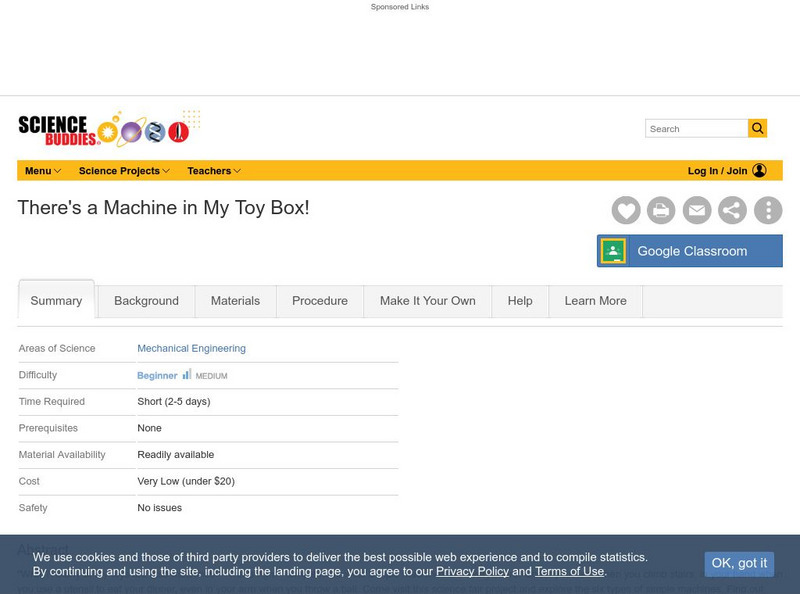Science Buddies
Science Buddies: Balancing the Load: The See Saw as a Simple Machine
Have you ever tried to pull out a nail out of wood with your bare hands? Or have you tried to shove a staple through a stack of papers without a stapler? A hammer's claw, a stapler, a pair of pliers and a shovel are each examples of...
Alabama Learning Exchange
Alex: Inventions Using Simple Machines Project
Students will have completed a unit on the six simple machines (lever, inclined plane, pulley, wedge, screw, and wheel and axle) before beginning this project. Students will choose to investigate an invention composed of one or more...
Alabama Learning Exchange
Alex: Simple Machines
During this lesson, students learn about the six types of simple machines. They define each type of machine, experiment with each type, utilize the Internet to explore each type of machine and build their own simple machine. This lesson...
Science Buddies
Science Buddies: There's a Machine in My Toy Box!
Simple machines are everywhere, even many of your toys are simple machines. Come visit this science fair project and explore the six types of simple machines. Find out how many are hiding under the hinged lid (yes, another simple...
TeachEngineering
Teach Engineering: Simple Machines and Modern Day Engineering Analogies
Students apply the mechanical advantages and problem-solving capabilities of six types of simple machines (wedge, wheel and axle, lever, inclined plane, screw, pulley) as they discuss modern structures in the spirit of the engineers and...
Science Struck
Science Struck: Simple Machines for Kids
Gives short descriptions of the six types of simple machines.
Other
Uss Constitution Museum: Constructing a Warship
USS Constitution was built as a fighting machine and utilized the six simple machines of science to accomplish the many tasks required of her. Young scholars will identify and manipulate these machines to create inventions that would...
PBS
Pbs Teachers: Secrets of Lost Empires I Obelisk
Investigate how levers can be used to lift objects and discover how the position of the fulcrum affects the force and the distance of the load lifted.






